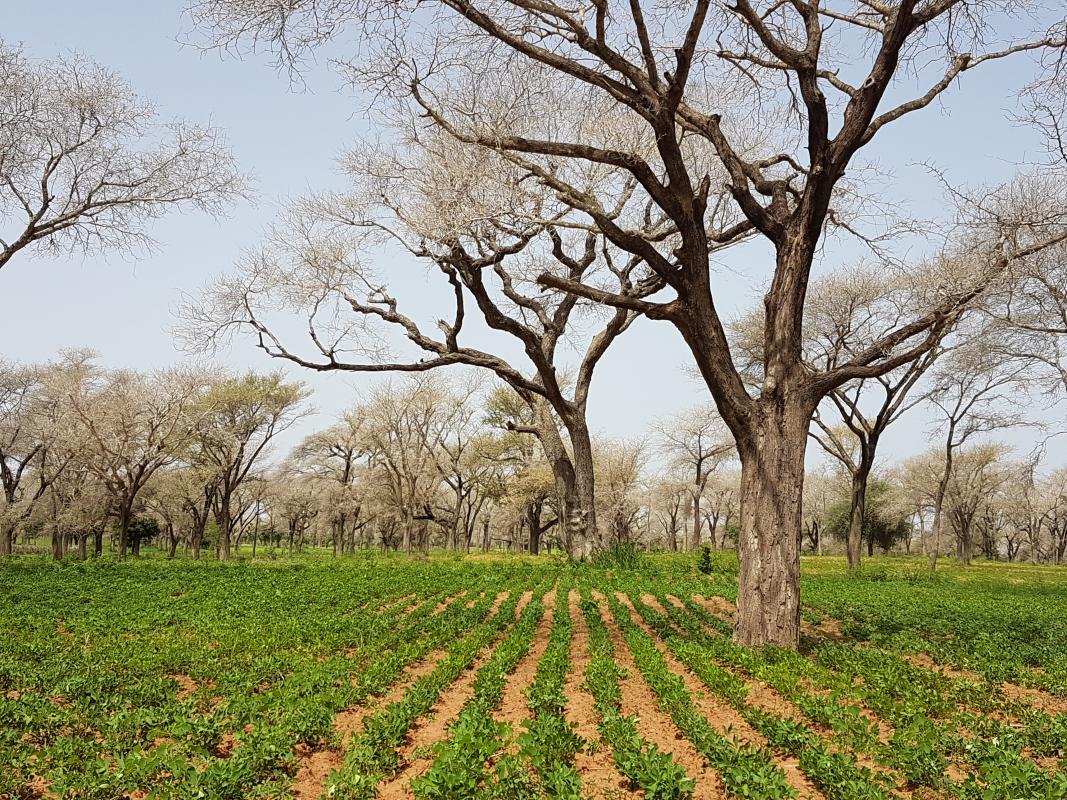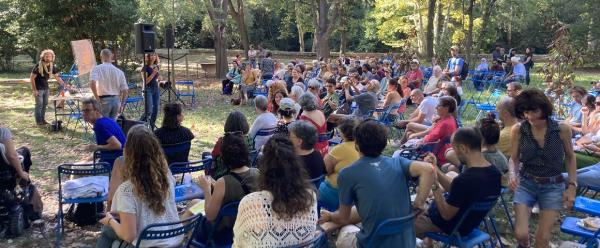Event 29 October 2025
- Home
- Press area
- Press releases
- Agroforestry week in Montpellier, 19 to 23 May 2019
World Congress on Agroforestry in Montpellier from 19 to 23 May: a scientific congress and public events

It is through a public day, organized by the Fondation de France and the French Association of Agroforestry, that this Week of Agroforestry will start on Sunday 19 May at Le Corum. "We wanted, through this general public day ahead of the congress, to make agroforestry better known to civil society" , explains Emmanuel Torquebiau, Agroforestry Project Manager at CIRAD and Chairman of the Organizing Committee of the 4th World Congress on Agroforestry.
Agroforestry, the future of agriculture?
The organizers wanted to anchor this fourth edition of the World Congress on Agroforestry, to be held from 20 to 22 May 2019, in the societal debate on agriculture. "It is time for technical solutions to be discussed within civil society and to become part of public policy ", comments Christian Dupraz , INRA Research Director and Chairman of the Scientific Committee of the congress. By combining science and dialogue with society, the congress will be an opportunity to assess the contribution of agroforestry to the agro-ecological transition of agriculture at the global level.
Agroforestry, which involves combining trees with crops and pastures, is now recognized to protect soils, address climate change issues and contribute to global food security. This practice could therefore be the future of agriculture. The fields of application are very diverse: hedges and alignment of trees or shrubs in and around plots, multilayer agriculture, timber or fruit production in cropland, fodder trees, trees for honey, shade trees for perennial crops (coffee, cocoa, grapevines) or livestock, multilayer agroforests and agroforestry gardens.
An International Union of Agroforestry will be created at the Congress, to federate agroforestry innovations on a global scale.
A roadmap for global agroforestry will also be drafted during the event.
There is a press briefing on Monday 20 May at 12:00 with:
- Emmanuel Torquebiau, Chair of the Organizing Committee
- Christian Dupraz, Chair of the Scientific Committee
- Patrick Worms, Scientific Advisor, World Agroforestry and Chair of EURAF (European Agroforestry Federation)
- Marie Gosme, INRA researcher, co-Chair of the Scientific Committeee.
On Thursday 23 May, participants will be able to visit the main European experimental agroforestry site
at Domaine de Restinclières in Prades-le-Lez (11 km north of Montpellier) where cereals (durum wheat and barley rotated with protein peas) are grown with many tree species, particularly walnut trees. In more stony soils, Vines are grown with pines and cormiers. This 50-ha experimental farm, which belongs to Hérault County Council, is scientifically managed by INRA Occitanie-Montpellier.
In parallel with the congress, several events for the general public
Sunday 19 May, 10 am to 6 pm, Le Corum:
Sustainable agriculture, a food topic: Trees on our plates!
Is it possible to ripen tomatoes under trees? Why graze cows under fruit trees or in the woods? Can replanting hedges help to stop pesticide use? Doesn't having trees in fields hinder sustainable food production? Come and ask all these questions, and others, and awaken your senses to agroforestry by meeting the farmers, agricultural development actors, researchers, speakers, artists... from around the world who are experimenting and (re)inventing these forms of agriculture.
This is a free day, open to all, organized by the French Association of Agroforestry and the Fondation de France , with: an international village of agroforestry initiatives, a conference cycle, an exhibition space, a space research presentation, a corner for agroforestry products, shows, conferences, tastings, and more.
Thursday 23 May, 9 pm, Salle Rabelais, Esplanade Charles de Gaulle:
Can we still eat chocolate? What do tropical forests think? (Free film show-debate organized by CIRAD and Agropolis International).
France and Montpellier, 35 years of agroforestry research
The concept of agroforestry emerged in the 1970s in international think tanks seeking solutions to the problem of tropical deforestation. Today, agroforestry has become a subject of international research, which is now part of the agricultural education curriculum around the world.
It was at the University of Montpellier that the first French research on agroforestry was conducted in the 1980s. Research is now conducted within the Agropolis International scientific community, thanks to research teams at CIRAD, INRA and IRD.
France has played a leading role in scientific thinking on agroforestry, with the implementation of a National Plan for the Development of Agroforestry in 2016. Today, more than 15 French research units, bringing together around 120 researchers are involved in agroforestry.
A green congress!
The organizers of the congress have opted for:
- Voluntary climate compensation for participants' trips: the sums collected will be devoted to agroforestry research and development projects related to soil protection.
- A limited ecological footprint: preference is given to local suppliers, natural or organic products, minimal printing of paper, public transport, and non-use of plastic tableware.



























